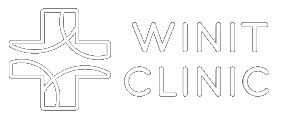Oral lichen planus specialist near me
Prevent, alleviate, or heal disease—naturally.
Meet our practitioners who specialize in natural Lichen planus treatment
How it works
Consult with our health coaches who will learn about your symptoms, habits, and goals.
Take personalized home health tests to discover potential root causes of any symptoms or conditions you may have.
Review your results in just days with our functional medicine doctors, nurses, and dietitians who will help you achieve optimal health.
Learn about Lichen planus
Lichen planus is a non-infectious, inflammatory condition that affects the skin, hair, nails, and mucous membranes, presenting in several forms, which can lead to a variety of physical appearances. It's characterized by purplish, itchy, flat bumps on the skin. The prevalence of lichen planus is estimated to affect around 1-2% of the global population, impacting adults more frequently than children. Despite its mysterious nature, with the exact cause still unknown, natural treatments and functional medicine have shown promise in managing its symptoms and improving the quality of life for those affected.
Causes
The exact cause of lichen planus remains elusive; however, it is believed to be linked to an autoimmune response where the body's immune system mistakenly attacks its own skin cells. Potential triggers for this response include: - Genetic predisposition - Viral infections, particularly the hepatitis C virus - Stressful life events - Exposure to certain chemicals used in medicines or photographic development
Signs and symptoms
Lichen planus can manifest in several ways, depending on the area it affects. Common signs and symptoms include: - Purple, flat-topped bumps on the skin, often itchy - White patches in the mouth or on the lips - Thin white lines over the rash - Painful ulcers in the mouth or vagina - Brittle, grooved, and ridged nails - Hair loss and scalp discoloration in severe cases
Diagnosing Lichen planus
An accurate diagnosis of lichen planus typically involves a combination of a physical examination, review of medical history, and possibly additional tests. These may include: - A skin biopsy, where a small piece of affected tissue is examined under a microscope - Hepatitis C tests, due to the association between the virus and lichen planus - Allergy tests to rule out contact dermatitis which can mimic lichen planus
Prevention and natural treatment
Prevention of lichen planus involves minimizing exposure to potential triggers, where possible, and adopting a healthy lifestyle to strengthen the immune system. Since stress is considered a potential trigger, stress management techniques such as yoga, meditation, and regular exercise can be beneficial. Treatment through functional medicine focuses on holistic healing, aiming to treat the root cause of the condition rather than just the symptoms. While there is no cure for lichen planus, natural treatments can help alleviate symptoms and include: - A diet rich in anti-inflammatory foods such as omega-3 fatty acids found in fish and flaxseeds, and antioxidants found in brightly colored fruits and vegetables - Supplements like vitamin A, vitamin C, and zinc may help improve skin health and reduce inflammation - Herbal remedies, including aloe vera gel for skin lesions and turmeric taken orally to reduce inflammation - Acupuncture and phototherapy, especially for skin lesions Functional medicine also emphasizes the importance of gut health in autoimmune conditions, suggesting probiotics and other gut-healing nutrients might play a role in symptom management for lichen planus. Always consult with a healthcare provider before starting any new treatment.
Browse popular locations
Atlanta, GA
Houston, TX
Chicago, IL
Los Angeles, CA
Miami, FL
Austin, TX
Dallas, TX
New York, NY
Seattle, WA
Charlotte, NC
Denver, CO
Maryland, NY
Connect with an expert for Lichen planus


